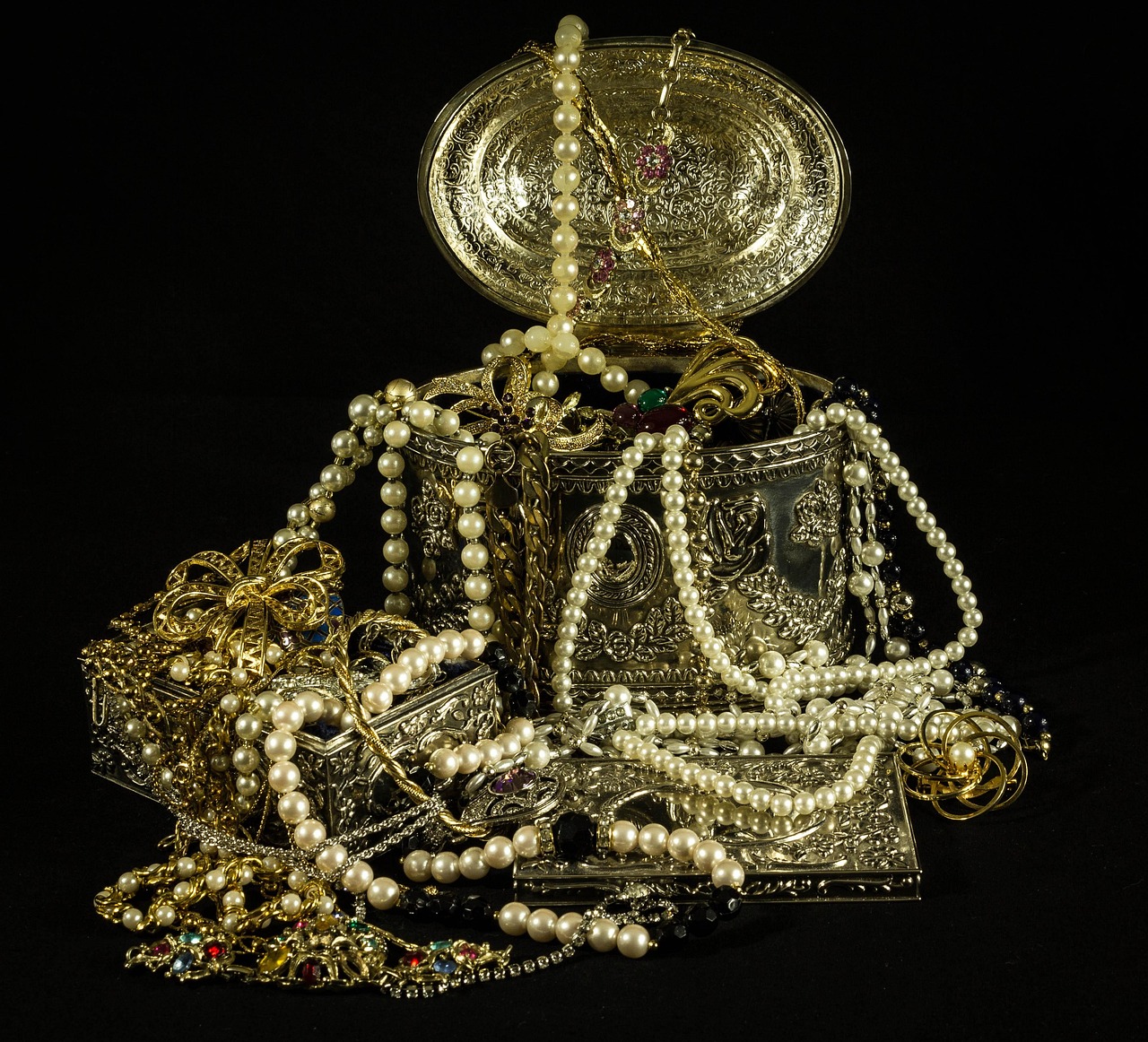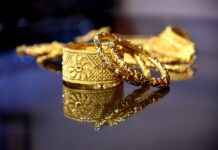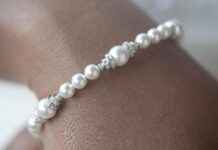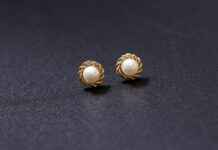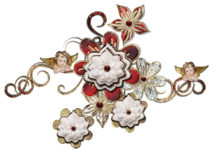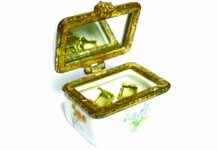This article delves into the symbolism and significance of various popular jewelry designs, revealing the rich stories and meanings that make them treasured across cultures and generations. Jewelry is not merely an accessory; it often embodies deep emotional connections, personal milestones, and cultural heritage.
The Symbolism of Rings
Rings have been worn throughout history, commonly signifying commitment, love, and eternity. From engagement rings that mark a promise of marriage to signet rings that represent family heritage, each type carries its unique significance. For example, the circular shape of a ring symbolizes eternity, as it has no beginning or end.
The Meaning of Necklaces
Necklaces serve as a canvas for personal expression and can convey profound meanings. Different designs, such as lockets, pendants, and statement pieces, each tell their own stories. Lockets, for instance, often hold cherished photos, connecting wearers with loved ones and preserving memories.
- Lockets and Their Sentimental Value: Lockets are treasured for their ability to carry photos or mementos, serving as a tangible connection to significant people and moments in one’s life.
- Pendants: A Personal Touch: Many pendants symbolize personal beliefs or milestones, such as religious symbols or birthstones, making them deeply meaningful to the wearer.
The Significance of Bracelets
Bracelets often symbolize friendship, protection, or status. From charm bracelets that tell unique stories to bangles that signify cultural traditions, each type carries its own cultural implications.
- Charm Bracelets: Each charm on a bracelet can represent a significant event or memory, allowing individuals to curate their personal stories.
- Bangles: In many cultures, bangles symbolize prosperity and marital status, often worn during important life events.
Earrings: More Than Just Accessories
Earrings serve as more than just fashion statements; they carry significant meanings as well. Different styles, including hoops, studs, and drop earrings, have distinct cultural roots and interpretations.
Conclusion
Jewelry is a powerful form of self-expression, rich with symbolism and meaning. Understanding the stories behind popular jewelry designs not only enhances our appreciation of these pieces but also connects us to the cultural and emotional narratives that they embody.
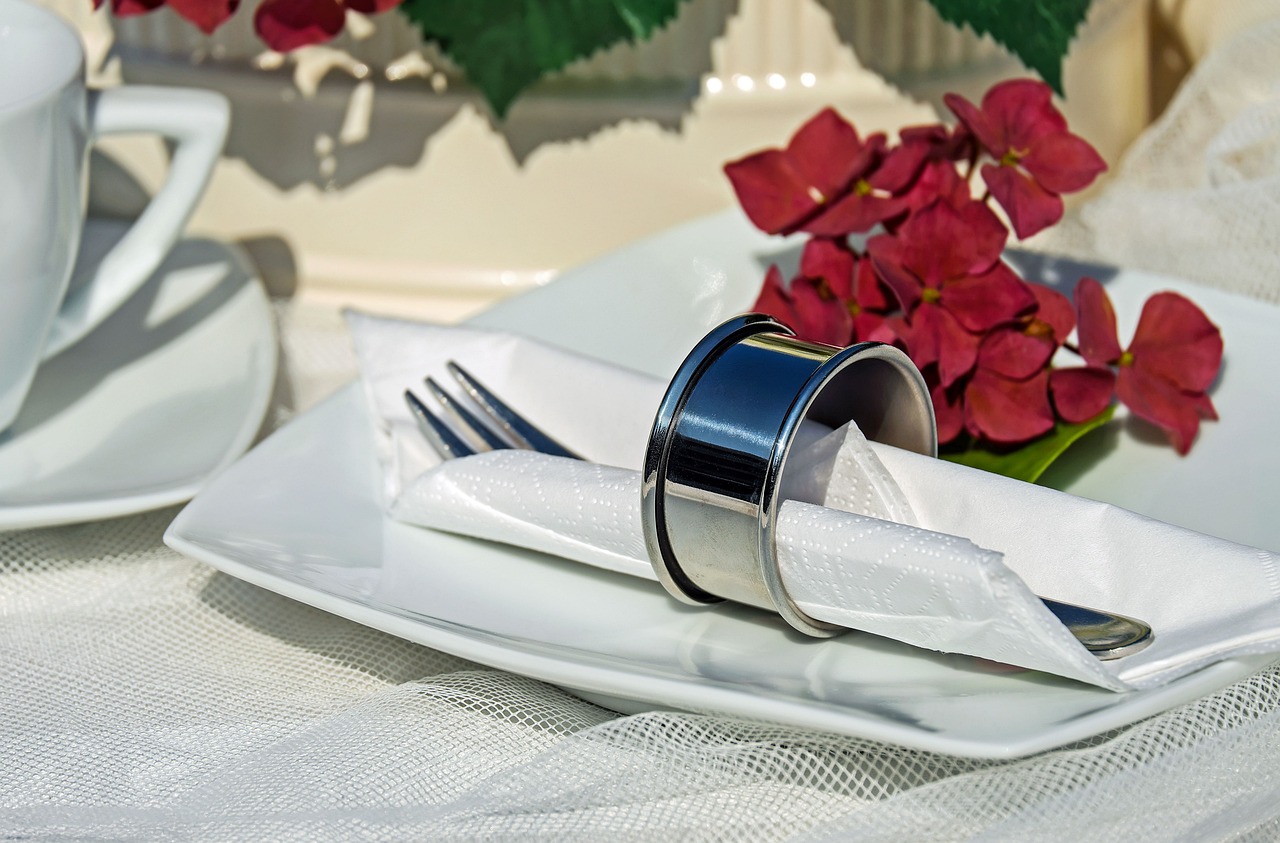
The Symbolism of Rings
Rings have a rich history, serving not only as decorative pieces but also as profound symbols across various cultures. For centuries, these circular bands have represented commitment, love, and the concept of eternity. Each type of ring carries its unique significance, making them cherished possessions for many.
One of the most recognized types of rings is the engagement ring. Traditionally given during a proposal, this ring symbolizes a promise of marriage and a shared future. The diamond, often chosen for its durability and brilliance, represents the strength of the bond. In many cultures, the placement of the ring on the fourth finger of the left hand is believed to connect directly to the heart, further emphasizing its romantic significance.
Wedding bands are another vital category of rings. Exchanged during the marriage ceremony, these rings signify the union of two individuals. The circular shape of the band represents infinity, with no beginning or end, symbolizing the everlasting nature of love and commitment.
Signet rings, often engraved with family crests or initials, have historically been used to signify status and identity. They were once used to seal documents, making them a powerful symbol of authority. Today, they continue to be worn as a statement of personal style and heritage.
Beyond these, there are also promise rings, which signify a commitment between partners that may not yet be ready for engagement. These rings often express a deep emotional bond, serving as a reminder of the promises made to one another.
In summary, rings are not merely ornamental but are imbued with deep meanings and cultural significance. From engagement to signet rings, each type tells a story of love, commitment, and personal identity, making them timeless treasures in the world of jewelry.
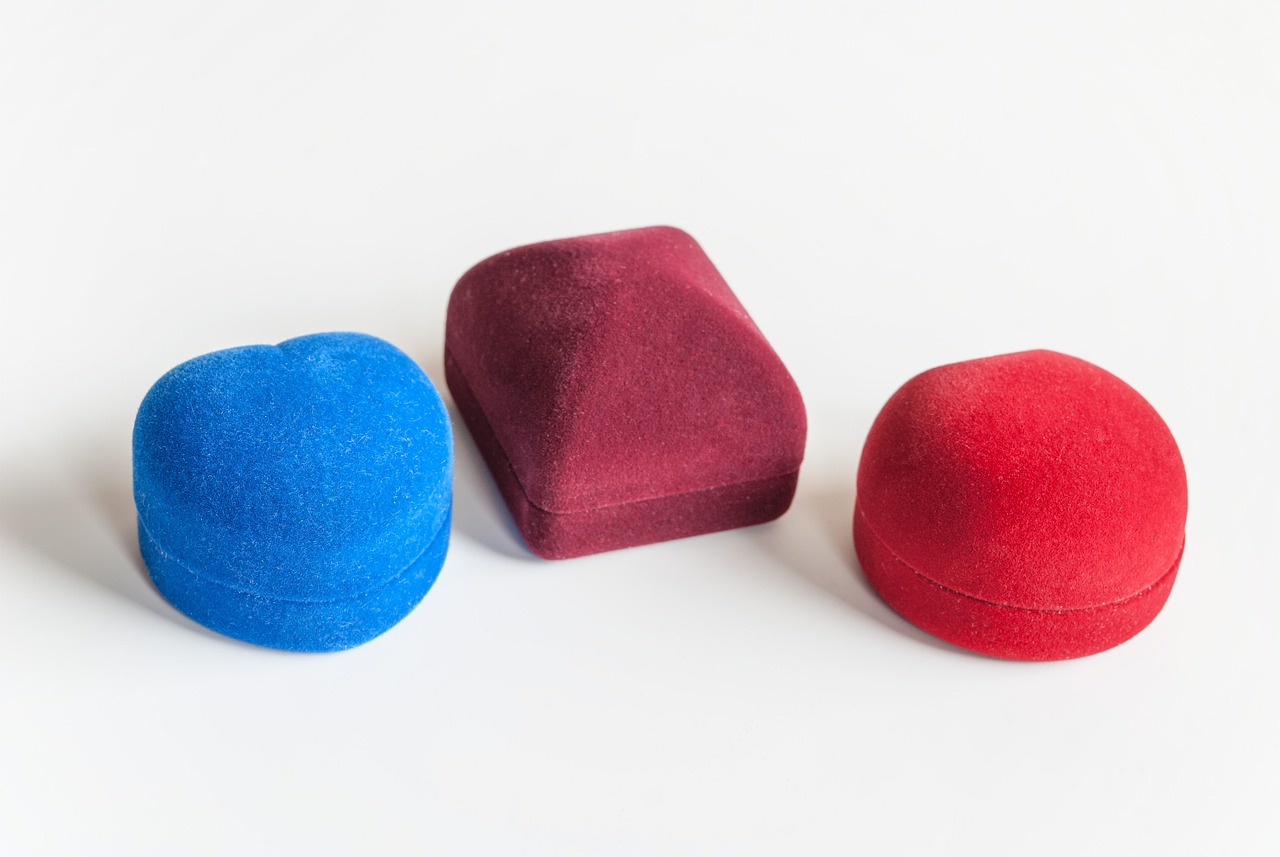
The Meaning of Necklaces
Necklaces are more than mere adornments; they are powerful symbols that can convey personal style and deep emotional significance. From the delicate lockets that hold cherished memories to the bold statement pieces that showcase individuality, each necklace tells a unique story. In this exploration, we will delve into the various designs of necklaces, their meanings, and the cultural implications they carry.
Lockets are among the most sentimental types of necklaces. Traditionally designed to hold small photographs or keepsakes, they serve as a tangible connection to loved ones. Many people wear lockets as a way to keep memories close to their hearts, making them a popular choice for gifts during significant life events such as weddings or birthdays.
Historical Context of Lockets: The history of lockets dates back centuries, often given as tokens of affection or remembrance. They have evolved from simple designs to intricate pieces adorned with gemstones and unique engravings, reflecting the personal stories of their wearers.
Modern Interpretations of Lockets: Today, lockets are reimagined in countless styles, from minimalist designs to elaborate, artistic creations. This evolution allows individuals to express their personal style while retaining the sentimental value that lockets inherently possess.
Pendants are another popular necklace design, often featuring symbols or charms that represent personal beliefs, milestones, or memories. These versatile pieces can be worn alone or layered for a more dramatic effect. Common pendant symbols include crosses, hearts, and initials, each carrying its own unique meaning.
Statement Necklaces are designed to stand out and make a bold impression. Often characterized by their size, color, and intricate designs, these necklaces can transform even the simplest outfit into a fashion statement. They are often associated with confidence and self-expression, allowing wearers to showcase their unique style and personality.
In conclusion, necklaces are a significant form of jewelry that can convey personal style and deep meanings. Whether it’s a locket holding cherished memories, a pendant representing personal beliefs, or a statement piece showcasing individuality, each necklace carries a story waiting to be told.
Lockets and Their Sentimental Value
Lockets are more than just beautiful pieces of jewelry; they serve as emotional vessels that connect wearers to their cherished memories and loved ones. These small, often ornate cases hold the power to encapsulate moments in time, allowing individuals to carry a piece of their heart wherever they go. The significance of lockets transcends mere aesthetics, tapping into the deep human desire for connection and remembrance.
Historically, lockets have been used as tokens of affection, often containing photographs or mementos of those who are dear to us. This tradition dates back centuries, with lockets being gifted during significant life events such as weddings, births, or memorials. The act of wearing a locket becomes a personal ritual, where the wearer can reflect on their relationships and the memories captured within.
In modern times, lockets have evolved in design but have retained their sentimental value. They are often customized to reflect the wearer’s personality and life experiences. Many people choose to include not only photographs but also small notes, locks of hair, or other meaningful objects. This personalization makes each locket unique, serving as a storytelling piece that carries the essence of the wearer’s journey.
Moreover, the act of opening a locket can evoke powerful emotions. It serves as a reminder of the bonds we share with others, whether they are family, friends, or lost loved ones. This emotional connection is what makes lockets particularly special; they are not just accessories but rather cherished heirlooms that can be passed down through generations.
In conclusion, lockets hold a profound sentimental value that goes beyond their physical form. They are a beautiful fusion of art and emotion, allowing individuals to keep their memories close to their hearts. Whether worn daily or saved for special occasions, lockets continue to symbolize love, remembrance, and the enduring connections we share with those we hold dear.
Historical Context of Lockets
Lockets are not just beautiful pieces of jewelry; they carry with them a rich history that dates back centuries. Traditionally, lockets have been given as gifts during significant life events, such as weddings, births, and memorials. Their evolution reflects changing cultural values and the enduring human desire to keep memories close.
Originally, lockets were designed to hold relics or hair from loved ones, serving as a tangible connection to those who have passed or are far away. In the Victorian era, the popularity of lockets surged, as they became symbols of romantic love. These ornate pieces often featured intricate designs and could hold photographs, allowing wearers to carry their beloved ones with them at all times.
The cultural significance of lockets extends beyond mere aesthetics. They have been used as tokens of friendship and loyalty, often exchanged between close companions as a promise of everlasting bonds. In many cultures, the act of gifting a locket signifies a deep emotional connection, making it a cherished keepsake.
As we moved into the 20th century, the design and purpose of lockets continued to evolve. They became more personalized, with many featuring engravings or unique shapes that reflected the wearer’s personality. This trend has persisted into modern times, where contemporary lockets often incorporate modern technology, such as digital displays that can show multiple images.
Today, lockets remain popular, not just as fashion statements but also as sentimental treasures. They serve as reminders of our heritage and the people who matter most in our lives. Whether adorned with photographs of family, friends, or pets, lockets continue to hold a special place in the hearts of many, proving that their significance has endured through the ages.
Modern Interpretations of Lockets
In recent years, lockets have undergone a remarkable transformation, evolving from traditional designs into contemporary pieces that resonate with today’s fashion sensibilities. These modern interpretations maintain their sentimental value while embracing new styles, materials, and functionalities.
Today’s lockets come in various forms, ranging from minimalist designs to intricate, artistic creations. Many contemporary jewelers are experimenting with unique shapes and innovative materials, such as recycled metals and eco-friendly options, appealing to environmentally conscious consumers. This shift not only enhances the aesthetic appeal of lockets but also aligns with the growing trend towards sustainability in jewelry.
Moreover, modern lockets often incorporate technology, allowing wearers to store digital memories alongside physical mementos. Some designs feature QR codes or NFC technology, enabling users to link to photos, videos, or messages that can be accessed via smartphones. This fusion of tradition and technology ensures that the emotional significance of lockets is preserved while adapting to the digital age.
Another notable trend is the personalization of lockets. Many jewelers now offer customization options, allowing individuals to engrave names, dates, or even short messages on their lockets. This personal touch enhances the emotional connection the wearer has with the piece, making it a truly unique item that reflects their personal story.
In summary, contemporary lockets are not just jewelry; they are cherished keepsakes that blend tradition with modernity. As they continue to evolve, they remain a powerful symbol of love, memory, and connection, proving that even in a fast-paced world, the sentimental value of jewelry endures.
Pendants: A Personal Touch
Pendants are more than just decorative accessories; they often hold profound personal significance for the wearer. These beautiful pieces of jewelry can represent beliefs, milestones, or cherished memories. In this section, we will explore some of the most popular pendant symbols and their interpretations, shedding light on why they resonate so deeply with individuals.
One of the most common types of pendants is the cross, which symbolizes faith and spirituality. For many, wearing a cross pendant is a way to express their religious beliefs and commitment to their faith. Similarly, the heart pendant is a universal symbol of love and affection, often given as a gift to signify a deep emotional connection between partners, friends, or family members.
Pendants can also commemorate significant life events. For instance, a birthstone pendant can represent one’s birth month or that of a loved one, serving as a beautiful reminder of family ties and personal history. Additionally, tree of life pendants symbolize growth, strength, and a connection to one’s roots, making them popular choices for those who value family heritage.
Another popular symbol is the infinity pendant, which represents eternal love and the unbreakable bonds between individuals. This makes it a favored choice for couples wishing to express their lifelong commitment to one another.
In various cultures, certain pendants carry unique meanings. For example, in some Native American traditions, the feather pendant symbolizes freedom and spiritual elevation, while in Egyptian culture, the Ankh represents eternal life.
In conclusion, pendants serve as a personal touch in jewelry, encapsulating the wearer’s beliefs, memories, and milestones. Whether chosen for their aesthetic appeal or their deeper meanings, these symbols resonate with individuals, making them cherished pieces of jewelry that tell a story.
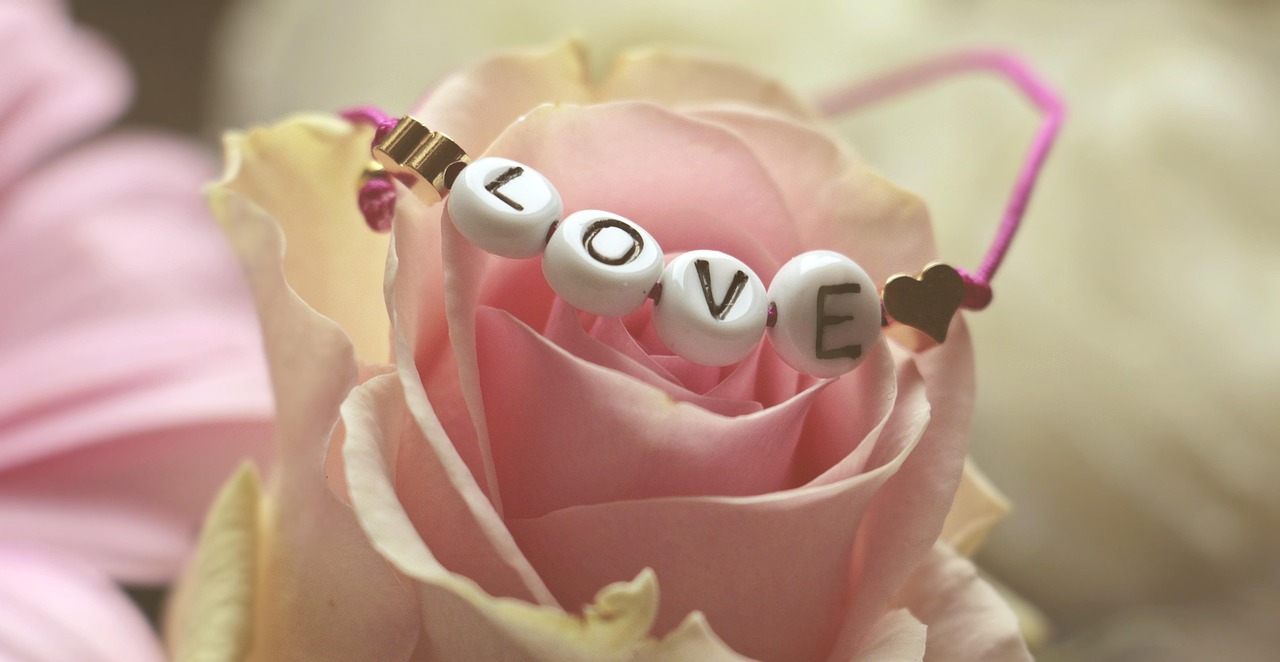
The Significance of Bracelets
Bracelets have long been cherished as symbols of friendship, protection, and even status across various cultures. Their significance transcends mere adornment, often intertwining with personal and societal narratives. In this section, we will delve into the different types of bracelets and their cultural implications, focusing on charm bracelets and bangles.
Charm bracelets are unique pieces of jewelry that tell a story. Each charm represents a significant event, personal achievement, or cherished memory. Individuals often curate their charm collections to reflect their journeys through life, making each bracelet a personalized narrative.
- Personal Milestones: Charms can symbolize birthdays, graduations, or weddings.
- Travel Adventures: Many choose charms that represent places they have visited.
- Hobbies and Interests: Charms can also reflect personal interests, such as music, sports, or art.
Bangles hold a significant place in various cultures, particularly in South Asia, where they are often associated with prosperity and marital status. In many traditions, wearing bangles is believed to bring good fortune and protect the wearer.
| Culture | Significance |
|---|---|
| Indian | Worn by brides as a symbol of marriage and prosperity. |
| African | Used in rituals and ceremonies, often signifying status and identity. |
| Western | Fashion statements that can reflect personal style and social status. |
In conclusion, bracelets serve as more than just decorative items; they are powerful symbols that carry deep meanings and cultural significance. Whether through the storytelling aspect of charm bracelets or the traditional importance of bangles, these accessories continue to resonate with people around the world, making them cherished components of personal expression.
Charm Bracelets and Their Stories
Charm bracelets are more than just fashionable accessories; they are deeply personal items that reflect the wearer’s unique journey through life. Each charm is a symbolic representation of significant moments, achievements, or cherished memories. This subsection delves into how individuals curate their charm bracelets to create a visual narrative of their personal milestones.
When selecting charms, individuals often choose pieces that resonate with their experiences. For example, a charm shaped like a suitcase might symbolize a memorable trip, while a heart charm could represent a loved one. This curation process allows wearers to express their identity and share their stories with others.
Moreover, charm bracelets are often gifted during special occasions, such as birthdays, graduations, or anniversaries. Each charm added to the bracelet serves as a reminder of that particular event, making the bracelet a living scrapbook of memories. This emotional connection transforms the bracelet into a treasured heirloom that can be passed down through generations.
In addition to personal stories, charm bracelets can also reflect interests and passions. For instance, a charm of a musical note may signify a love for music, while a charm depicting a book might represent a passion for literature. This aspect of charm bracelets allows wearers to showcase their individuality and connect with others who share similar interests.
Ultimately, charm bracelets are a beautiful blend of artistry and storytelling. They serve as a canvas for personal expression, inviting wearers to curate their own unique tales through the charms they choose. As trends evolve, the charm bracelet continues to hold a special place in the hearts of many, symbolizing the ever-changing journey of life.
Bangles: Cultural Significance
Bangles are more than just decorative accessories; they are deeply embedded in the cultural fabric of many societies around the world. In various cultures, bangles serve as powerful symbols of prosperity, marital status, and identity. This section delves into the significance of bangles across different traditions and their roles in social rituals.
- India: In Indian culture, bangles are traditionally worn by married women, symbolizing their marital status and prosperity. The red and green bangles are particularly significant during weddings, as they are believed to bring good fortune.
- Middle East: In many Middle Eastern countries, bangles are often made of gold and are worn by women of all ages. They are seen as a sign of wealth and are often gifted during significant life events such as weddings and childbirth.
- Africa: In various African cultures, bangles made from natural materials like wood, metal, and clay are worn as a form of self-expression. They often signify tribal identity and social status, with different designs representing different cultural backgrounds.
- Western Cultures: While traditionally less significant than in Eastern cultures, bangles have gained popularity in Western fashion as a form of self-expression and style. They are often worn in stacks to create a personalized look.
The design and material of bangles can also convey different meanings. For instance, glass bangles are often associated with femininity and grace, while metal bangles might symbolize strength and resilience. Thus, the choice of bangle can reflect the wearer’s personality and cultural background.
In conclusion, bangles hold a rich tapestry of meanings across cultures. They are not merely ornaments but are imbued with cultural significance that reflects the traditions, beliefs, and identities of the communities that wear them. Understanding the importance of bangles can provide deeper insights into the cultural practices and values of different societies.
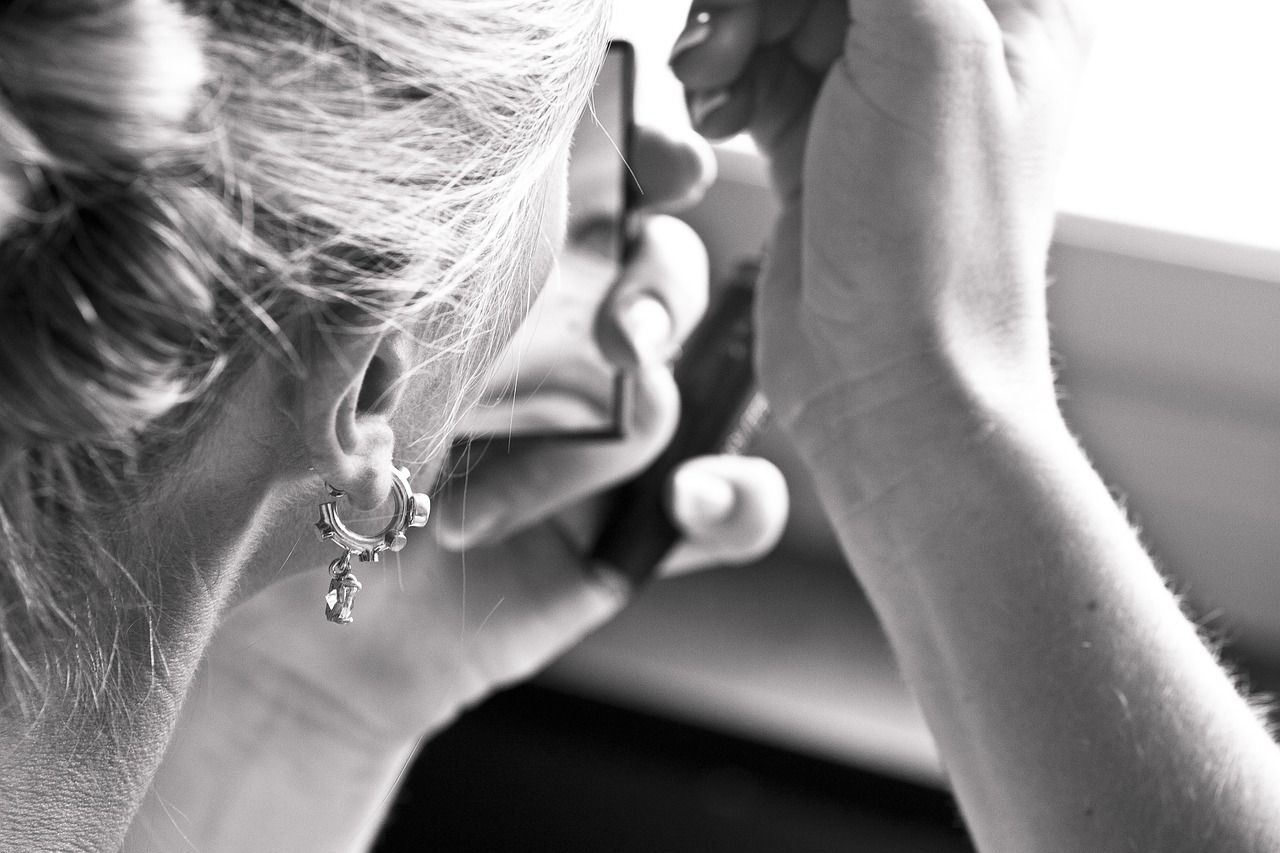
Earrings: More Than Just Accessories
Earrings are not merely accessories; they are rich in symbolism and cultural significance. Throughout history, earrings have been worn by various cultures, each type carrying its own unique meaning. This section delves into the diverse types of earrings and the stories they tell, from studs to hoops and drop earrings.
Stud Earrings are often seen as a symbol of elegance and simplicity. Their understated design allows them to be worn on various occasions, making them a versatile choice in jewelry. Traditionally, they are associated with youth and innocence, often given as first pieces of jewelry to young girls. In contemporary fashion, they can also symbolize a minimalist lifestyle.
Hoop Earrings have a long-standing cultural heritage. They are often associated with strength and unity, particularly in African and Latin American cultures. The circular shape of hoop earrings symbolizes the cycle of life and infinity. In modern fashion, their resurgence reflects a bold statement of identity and confidence.
Drop Earrings carry a sense of grace and movement. They are often worn during formal occasions and can represent elegance and femininity. Depending on their design, drop earrings can also convey messages of creativity and expression, making them a popular choice among artists and performers.
In conclusion, earrings are more than just fashion accessories; they are meaningful pieces of jewelry that carry deep cultural and personal significance. Understanding the symbolism behind different types of earrings can enhance our appreciation for this timeless adornment.
Hoop Earrings and Their Cultural Roots
Hoop earrings are more than just a fashionable accessory; they carry a profound cultural significance that spans across various societies and eras. Their circular shape is often interpreted as a symbol of strength and unity, representing the unending cycle of life and the interconnectedness of individuals within a community.
Historically, hoop earrings have been worn by women in diverse cultures, from ancient civilizations to modern fashionistas. In African cultures, for instance, they are often seen as a sign of wealth and status, with larger hoops denoting higher social standing. Similarly, in Latin American communities, hoop earrings are celebrated as a cultural emblem, often passed down through generations as a family heirloom.
In addition to their cultural roots, hoop earrings have made a significant resurgence in contemporary fashion. Designers have reimagined them in various styles, materials, and sizes, appealing to a broad audience. This modern revival highlights their versatility; they can be worn casually or dressed up for formal occasions, making them a staple in many wardrobes.
Moreover, hoop earrings have also become a symbol of feminism and empowerment. Many women wear them as an assertion of their identity and strength, reclaiming a style that has been historically marginalized. This shift in perception underscores the earrings’ role not just as a fashion statement, but as a powerful symbol of resilience and self-expression.
In conclusion, hoop earrings are steeped in rich cultural history and continue to evolve within modern fashion. Their significance transcends mere aesthetics, embodying themes of strength, unity, and empowerment that resonate with individuals from all walks of life.
Studs: A Symbol of Simplicity
Stud earrings are widely recognized for their timeless elegance and versatility. These minimalist pieces have transcended trends, making them a staple in every jewelry collection. Their simplicity allows them to be paired with a variety of outfits, from casual wear to formal attire, making them suitable for any occasion.
Beyond their aesthetic appeal, stud earrings often carry symbolic meanings. For many, they represent purity and innocence, serving as a reminder of cherished memories or significant milestones. The choice of materials, such as gold, silver, or gemstones, can also enhance their meaning. For instance, diamond studs are frequently associated with commitment and lasting love, often given as gifts to commemorate special moments.
Different designs of stud earrings carry unique interpretations. For example, floral designs may symbolize growth and beauty, while geometric shapes can represent stability and balance. The choice of a particular design can reflect the wearer’s personality and values, making stud earrings not just a fashion accessory but a personal statement.
Moreover, the cultural significance of stud earrings varies across different societies. In some cultures, they are worn as a rite of passage, marking a transition into adulthood. In others, they may signify social status or wealth. This rich tapestry of meanings adds depth to these seemingly simple pieces, inviting wearers to connect with their heritage.
In conclusion, stud earrings are more than just a fashionable accessory; they embody elegance, simplicity, and a wealth of personal and cultural significance. As they continue to evolve, their enduring appeal ensures that they will remain a beloved choice for generations to come.

The Role of Brooches in Jewelry
Brooches have experienced a remarkable revival in recent years, emerging as a significant accessory in the world of fashion. These decorative pins, once primarily functional in fastening garments, now serve as powerful symbols of identity, status, and personal expression.
Historically, brooches were essential items in wardrobes, especially in the medieval era, where they were used to secure clothing. As time progressed, they evolved into more than just practical tools; they became a canvas for artistic expression and a reflection of the wearer’s social standing. Wealthy individuals often adorned their brooches with precious stones and intricate designs, showcasing their affluence and taste.
In modern times, brooches have taken on new meanings. They are often used to convey messages, whether it’s a personal statement, a political stance, or a tribute to a cause. For instance, wearing a brooch in the shape of a ribbon can symbolize support for various charitable movements, making them a versatile accessory that transcends mere fashion.
Moreover, contemporary designers are reimagining brooches, incorporating a variety of materials such as enamel, wood, and even recycled elements. This innovation allows wearers to express their individuality and creativity. Modern brooches can be bold and colorful or subtle and elegant, catering to diverse tastes and styles.
In conclusion, brooches have transformed from functional items to significant fashion statements that carry deep meanings. Their ability to convey messages and signify status makes them a unique and cherished piece of jewelry. As they continue to evolve, brooches remain a testament to the rich history and enduring significance of adornment in human culture.
Historical Use of Brooches
Brooches, once essential for fastening garments, have evolved into significant symbols of status and personal expression. Their history stretches back to ancient civilizations, where they were crafted from various materials such as bronze, gold, and gemstones, reflecting the wealth and craftsmanship of their owners. Initially, these ornamental pieces served a practical purpose, securing clothing in place, especially in an era when buttons were not yet commonplace.
As time progressed, brooches began to embody more than mere functionality. During the Middle Ages, they became a mark of nobility and prestige. Wealthy individuals adorned themselves with elaborate designs, often featuring intricate engravings and precious stones. This shift from practicality to ornamentation mirrors broader societal changes, where personal adornment became a means to convey social status.
In the Victorian era, brooches took on even deeper meanings, often used to commemorate significant life events such as marriages, births, and deaths. They were frequently designed to include lockets or spaces for holding hair or portraits of loved ones, creating a personal connection between the wearer and the piece. This emotional significance further solidified the brooch’s role in jewelry as a cherished item that tells a story.
Throughout the 20th century, brooches experienced various revivals, adapting to fashion trends while maintaining their symbolic meanings. Today, modern brooches are celebrated for their artistic designs and innovative materials, allowing wearers to express their individuality and style. They serve as a reminder of their rich history while remaining relevant in contemporary fashion, illustrating how jewelry can evolve yet retain its core significance.
Contemporary Brooch Designs
Modern brooches have evolved significantly from their traditional roles, now serving as bold statements of individual style and creativity. These accessories are not merely functional; they are a canvas for artistic expression and personal storytelling.
- Unique Materials: Today’s brooches are crafted from a variety of materials, including resin, wood, metal, and even upcycled elements. This diversity allows designers to create pieces that are not only visually striking but also environmentally conscious.
- Innovative Designs: Contemporary designers are pushing the boundaries with abstract shapes, geometric patterns, and thematic motifs. This trend allows wearers to choose brooches that resonate with their personal aesthetics or convey specific messages.
- Customization: Many modern brooches offer options for customization, enabling individuals to incorporate personal symbols, initials, or even gemstones that hold special meaning. This trend emphasizes the wearer’s unique identity and story.
- Versatile Styling: Brooches can be worn in multiple ways—on jackets, hats, bags, or even as part of a hair accessory. This versatility makes them a favorite among fashion enthusiasts looking to add a personal touch to their outfits.
The resurgence of brooches in contemporary fashion is also linked to a growing appreciation for vintage styles and nostalgic elements. Many designers draw inspiration from past eras, infusing modern sensibilities with classic designs. This blend of old and new not only appeals to various age groups but also encourages a deeper connection to fashion history.
In conclusion, modern brooches are much more than mere accessories; they are a reflection of personal style, creativity, and identity. As trends continue to evolve, these pieces will remain significant in the world of fashion, allowing individuals to express their uniqueness in a myriad of ways.
Frequently Asked Questions
- What do different types of rings symbolize?
Rings often symbolize commitment, love, and eternity. Engagement rings signify love and commitment, while signet rings can represent family heritage or personal identity.
- What is the significance of lockets in jewelry?
Lockets hold cherished photos or mementos, connecting wearers to their loved ones. Historically, they were given during significant life events, making them rich in sentimental value.
- How do charm bracelets tell a story?
Each charm on a charm bracelet represents a personal journey or milestone. The wearers curate their charms to reflect important memories, making each bracelet unique.
- What do hoop earrings represent?
Hoop earrings have a cultural history symbolizing strength and unity. They have seen a resurgence in modern fashion, maintaining their significance across different cultures.
- Why are brooches becoming popular again?
Brooches are making a comeback as they convey messages and signify status. Their unique designs allow individuals to express their personality and style in contemporary fashion.

